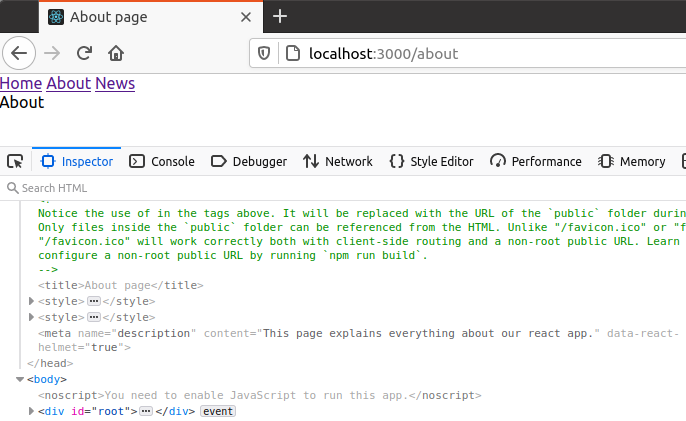Managing Services in React Applications
Learn how to structure and implement services in your React applications to improve code organization, reusability, and maintainability.
Learn how to structure and implement services in your React applications to improve code organization, reusability, and maintainability.
This article explains how to use services in React applications for better code organization and maintainability. It covers what services are in the context of React, why they are beneficial, and how to create and use them with examples. The article also touches upon dependency injection as an advanced technique for managing services in larger applications.
While React itself doesn't enforce a strict "service" concept like Angular, using services can significantly improve your application's organization and maintainability, especially as it grows.
Here's a breakdown of how to implement and utilize services effectively in your React projects:
1. What are Services in the Context of React?
In React, a "service" is simply a JavaScript module containing reusable logic that's not directly tied to a specific component's UI. Think of them as containers for:
fetch or axios).2. Why Use Services?
3. Creating a Simple Service:
Let's create a service to handle API requests:
// services/apiService.js
const BASE_URL = 'https://api.example.com';
export const getProducts = async () => {
const response = await fetch(`${BASE_URL}/products`);
return response.json();
};
export const getProductById = async (productId) => {
const response = await fetch(`${BASE_URL}/products/${productId}`);
return response.json();
};4. Using a Service in a Component:
// components/ProductList.js
import React, { useState, useEffect } from 'react';
import { getProducts } from '../services/apiService';
const ProductList = () => {
const [products, setProducts] = useState([]);
useEffect(() => {
const fetchProducts = async () => {
const data = await getProducts();
setProducts(data);
};
fetchProducts();
}, []);
// ... rest of your component logic
};5. Going Further: Dependency Injection (Optional)
For larger applications, consider dependency injection to manage service dependencies more effectively. While React doesn't have a built-in DI system, you can achieve similar benefits using:
Key Points to Remember:
This JavaScript code defines a service for fetching products from an API and a React component to display them. The service handles API requests, error handling, and data parsing. The component manages loading and error states, fetches data using the service, and renders a list of products.
// services/apiService.js
const BASE_URL = 'https://api.example.com';
export const getProducts = async () => {
try {
const response = await fetch(`${BASE_URL}/products`);
if (!response.ok) {
throw new Error('Failed to fetch products');
}
return response.json();
} catch (error) {
console.error("Error fetching products:", error);
throw error; // Re-throw to allow components to handle the error
}
};
export const getProductById = async (productId) => {
try {
const response = await fetch(`${BASE_URL}/products/${productId}`);
if (!response.ok) {
throw new Error(`Failed to fetch product with ID ${productId}`);
}
return response.json();
} catch (error) {
console.error("Error fetching product:", error);
throw error;
}
};
// components/ProductList.js
import React, { useState, useEffect } from 'react';
import { getProducts } from '../services/apiService';
const ProductList = () => {
const [products, setProducts] = useState([]);
const [isLoading, setIsLoading] = useState(true);
const [error, setError] = useState(null);
useEffect(() => {
const fetchProducts = async () => {
setIsLoading(true);
try {
const data = await getProducts();
setProducts(data);
} catch (err) {
setError(err.message);
} finally {
setIsLoading(false);
}
};
fetchProducts();
}, []);
if (isLoading) return <div>Loading products...</div>;
if (error) return <div>Error: {error}</div>;
return (
<ul>
{products.map((product) => (
<li key={product.id}>{product.name}</li>
))}
</ul>
);
};
export default ProductList;Explanation:
apiService.js:
try...catch blocks to handle potential errors during API calls. This is crucial for providing a good user experience and preventing your application from crashing.catch block now re-throws the error after logging it. This allows components using the service to implement their own error handling if needed.ProductList.js:
isLoading state to display a "Loading..." message while fetching data.error state to display a user-friendly error message if the API call fails.Key Improvements:
This example demonstrates a more practical and robust way to use services in React applications. Remember to adapt the error handling and loading state management to fit your specific application's requirements.
General Considerations:
apiService, authService, localStorageService) to clearly indicate their purpose.src/services) to keep your project structured.Alternatives to Services:
Advanced Patterns:
Testing:
When to Consider Dependency Injection:
This article provides a concise guide on implementing and utilizing services in React applications for improved code organization and maintainability.
| Aspect | Description |
|---|---|
| What are Services? | JavaScript modules containing reusable logic not directly tied to UI components. They handle tasks like data fetching, business logic, and side effects. |
| Benefits of Using Services | - Improved code organization and separation of concerns. - Enhanced reusability of logic across components. - Easier unit testing. |
| Creating a Service | Create a JavaScript module (e.g., apiService.js) and export functions containing the desired logic (e.g., API calls). |
| Using a Service | Import the service functions into your components and call them as needed. |
| Dependency Injection (Optional) | For larger applications, consider using Context API or third-party libraries like InversifyJS for managing service dependencies more effectively. |
Key Takeaways:
By leveraging services, React projects can achieve better code organization, maintainability, and scalability. While React itself doesn't enforce a strict service structure, adopting this pattern, especially for larger applications, can significantly streamline development and improve the quality of your codebase. Remember to consider the specific needs of your project and explore advanced patterns like dependency injection and service composition for managing complexity as your application grows.
 React.js Services. React and services? Huh? | by Filip Tonic | Nerd ... | React and services? Huh? 🤔
React.js Services. React and services? Huh? | by Filip Tonic | Nerd ... | React and services? Huh? 🤔 Dependency Injection /Services pattern for React (inspired by ... | Having worked in an Angular-development team for several years, it was exciting for me to learn React...
Dependency Injection /Services pattern for React (inspired by ... | Having worked in an Angular-development team for several years, it was exciting for me to learn React... Injectable services in React. How they're implemented and their ... | How they’re implemented and their similarities with Angular services
Injectable services in React. How they're implemented and their ... | How they’re implemented and their similarities with Angular services How to better organize your React applications? | by Alexis Mangin ... | I’ve been working on very large web applications for the past few years, starting from ground zero and, with a dozen other developers…
How to better organize your React applications? | by Alexis Mangin ... | I’ve been working on very large web applications for the past few years, starting from ground zero and, with a dozen other developers… How To Structure Folders In Your React Application | by Simeon ... | I have always loved to have full control over everything I build but starting out with something new is sometimes tedious. You really don’t…
How To Structure Folders In Your React Application | by Simeon ... | I have always loved to have full control over everything I build but starting out with something new is sometimes tedious. You really don’t… A Better Way To Use Services In React Application | Blog by ... | Do you know exactly what is a service? And what is the best way to use services in React applications? Read on to find out all about it.
A Better Way To Use Services In React Application | Blog by ... | Do you know exactly what is a service? And what is the best way to use services in React applications? Read on to find out all about it. Create a React app served by Express.js & Node.js (and add ... | I found a lot of tutorials explaining how to host React apps online. Most of them are outdated and don’t explain how you can get both…
Create a React app served by Express.js & Node.js (and add ... | I found a lot of tutorials explaining how to host React apps online. Most of them are outdated and don’t explain how you can get both…